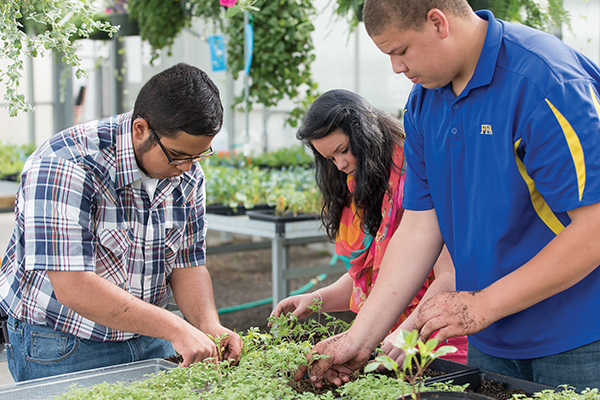Create a Foundation for the Future
Feb 05, 2018 02:32AM ● By Family Features

Making sure your kids are ready to take on the world as adults is arguably one of the most important roles of a parent. Now, more than ever, education is the foundation of that preparation.
As technology continues to evolve, it’s important that kids are learning, and also developing skills in high-demand areas, such as science, technology, engineering and math (STEM). A strong foundation of STEM learning is an important tool for the future, no matter the career path.
The experts at the America's Farmers Grow Rural Education program, sponsored by the Monsanto Fund, are aiming to raise awareness of the benefits for today’s students, and partnering with farmers to award STEM grants that enhance programming at rural public school districts.

While nearly everyone has heard about STEM education in one way or another, some people don’t understand its true value in school and in the workplace.
It’s cutting edge. When it comes to innovation, there’s no disputing that STEM is progressing changes throughout society. STEM fields are at the forefront of nearly all of the exciting modern developments, from the latest digital gadgets enabled by technology to ground-breaking scientific research. Another benefit of this progressive environment is the financial and social impact on the community. Skilled STEM workers are driving trends and innovations, which can create jobs and boost the economy. All of these attributes appeal to eager, young graduates looking to make their mark.
It’s where the jobs are. The U.S. Bureau of Labor Statistics published a report on the 10 fastest-growing occupations through 2026. In the report, 100 percent of the jobs fall into STEM categories, from the No. 1 growth career – solar photovoltaic installers – to a handful of medical field jobs to statisticians, software developers and mathematicians.
It’s a chance to make a real difference. STEM fields can drive true social change. Researching and uncovering new treatments, or even the cure, for a debilitating disease is only possible with skills gained through STEM learning. However, science isn’t the only STEM field that brings opportunities to make a difference in others’ lives. A career in technology could mean helping a child hear or see for the first time using a specially constructed device, for example.
It’s a stepping stone to dozens of industries. While STEM learning lends itself well to a fairly large scope of career choices, that list is ever-expanding. In fact, most of today’s graduates find themselves hard-pressed to secure a position without some STEM training. Consider a seemingly distant field such as fashion, for example, where digital technologies enable design sketching, mathematic skills factor into creating patterns and some engineering knowledge is necessary for designing a runway show. One school district in Royal, Washington, is utilizing the program to raise academic achievement for students in the classroom and on state-mandated math tests. The America's Farmers Grow Rural Education grant allows teachers to extend learning for students, especially those who are learning English as a second language, who need intervention but lack the technology at home.
It's helpful in developing additional skills. The specific training involved in STEM education can help lead to certain career paths that will be available in the future. However, it can also help with more general skills. Students typically follow processes in STEM programming and training, such as the scientific method, that give them a chance to work with other students, test hypotheses and find solutions. These challenges can often help in developing teamwork, leadership and other collaborative life skills.
Learn more about the America’s Farmers Grow Rural Education program at GrowRuralEducation.com.
Photo courtesy of Getty Images (teacher with student)
